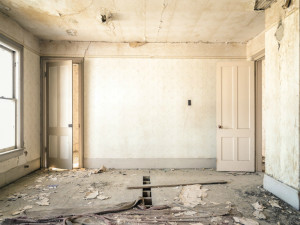by David Gross, Vice President of Marketing for GovPilot
View the entire newsletter for more articles: 2016 - NJAC County Biz - February
New Jersey received dubious distinction in 2015. According to Realty Trac, a real estate data company, the State led the nation in home foreclosure rates in 2015, with foreclosure filings at 1.91% of homes. Cities that have been hit the hardest include Atlantic City, Newark, and Paterson which had some of the highest rates in the nation.
These abstract numbers translate into very real problems. An increase in vacant properties often lead to crime and other public safety issues, forcing residents to consider relocating. As a result, property values decrease, reducing potential tax revenues for the municipality, county, and State. Blight is often the result of the local and county government’s lack of resources, inadequate data to hold property owners accountable, and inefficient operational processes to identify and manage vacant properties.
Counties in New Jersey are diligently working to tackle the challenges that stem from vacant properties. Cutting edge technology is becoming readily available for counties that have struggled with vacant or abandoned properties. Mobile technology, geographic information systems (GIS), automated workflow processes analytics and other management tools support better data collection, reporting decision making and streamlined property management.
Centralized data creates accountability
While the overall number of New Jersey’s foreclosures are among the nation’s highest, one trend is particularly alarming: zombie foreclosures.
According to RealtyTrac, 17,000 of New Jersey’s nearly 70,000 homes in foreclosure are considered “zombie foreclosures”. A zombie foreclosure occurs when the homeowner has vacated the property prior to the foreclosure proceedings being initiated. The uninhabited home leaves property maintenance unaccounted for. Counties are challenged with locating responsible parties, and maintaining these vacant unkempt properties is difficult.
Three counties in southern New Jersey are working to make it easier to identify parties responsible for the maintenance and upkeep of foreclosed properties. Gloucester County, which has more than 3000 foreclosed properties (about a third of which are “zombies”), has been building a one-stop registry to streamline the process of contacting the responsible party in the event maintenance issues arise. Surrounding municipalities are also buying into this approach. To encourage compliance, Washington Township has passed an ordinance to require the owners of vacant homes to register their properties for progressive fees ranging from $500 the first year and topping out at $5000 in the fourth year.
Accessible, centralized data that integrates with a geographic information systems (GIS) provide a critical edge to the county tasked with locating and maintaining vacant and abandoned properties.
GovPilot has worked with several New Jersey counties and municipalities to provide this integration. We’ve worked with the Camden County Improvement Authority to create an e-government system that includes GIS, electronic forms, and automated electronic processes. With the system in place, county officials can quickly find an address through the search bar or by clicking on the map parcel, easily accessing its associated data. Radius search and mail merge features provide the ability to automate notification mailings and simplify outreach. Additionally, the GIS platform enables County Administrators to visualize and proactively locate problem areas, helping them make faster and more informed decisions.
Streamlining processes makes the most of resources
While a better understanding of data is a step in the right direction, the extent of the problem is overwhelming. County officials can be inundated by the amount of complaints they receive and at times unable to deal with them in an efficient manner. This can create a frustrating situation both for officials and residents who may feel like they are reporting problems that never get resolved.
In Passaic County, the city of Paterson has recently implemented the ability to report a concern through their municipal website. Powered by GovPilot, the public can report concerns such as potholes, burned-out streetlights and graffiti – which are then automatically routed to the appropriate departments. This data is then aggregated into a database that is shareable across departments and accessible from the office or in the field.
Paterson isn’t just tracking complaints. They’re also taking advantage of a new tax lien sale law giving them the ability to sell vacant and abandoned properties to be cleaned up and put back on tax rolls. Paterson used GovPilot’s GIS maps to help disseminate the information about the parcels to interested buyers. By creating a special map layer for the sale, interested buyers can easily see what is available at auction. The public facing Property Market Analysis feature allows interested buyers to see estimated property valuations for any property, helping them make intelligent investment decisions.
Features like these make it easier for counties to engage potential buyers, tackle property complaints, and draw on insights influenced by data. Targeting blighted properties is no longer a matter of trying to stay ahead of the wave of constituent complaints and ever-changing ownership data. Now, counties can use powerful and innovative tools to gather and analyze data and streamline their processes.
